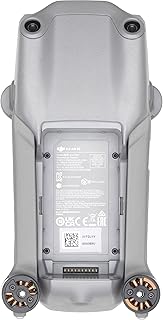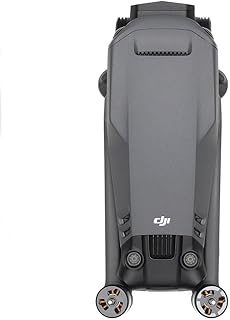RotorLogic Drone: A Case Study on its Real-World Applications
Introduction:
RotorLogic Drone is a fictional drone company. To create a compelling case study, we'll need to define its specific strengths, target markets, and real-world applications.
Defining RotorLogic Drone:
* Focus: RotorLogic Drone specializes in heavy-lift drones designed for industrial and commercial applications. Their drones are built with robust construction, high payload capacities, and advanced autonomous flight capabilities.
* Technology: They utilize cutting-edge LiDAR (Light Detection and Ranging) technology for precise mapping and 3D modeling, integrated with AI-powered obstacle avoidance systems for safe operation in complex environments.
* Applications: RotorLogic Drone caters to industries like:
* Infrastructure inspection: Bridge, power line, pipeline, and wind turbine inspection.
* Construction: Site surveying, material delivery, and progress monitoring.
* Agriculture: Precision farming, crop monitoring, and spraying.
* Emergency response: Search and rescue, disaster relief, and environmental monitoring.
Case Study 1: Infrastructure Inspection - Bridge Assessment:
Challenge: A state-owned bridge requires regular inspection to ensure structural integrity. Traditional methods are time-consuming, dangerous, and costly.
Solution: RotorLogic Drone deploys its heavy-lift drone equipped with LiDAR and high-resolution cameras. The drone autonomously inspects the bridge's underside, capturing detailed images and 3D models of the structure.
Benefits:
* Increased safety: No need for inspectors to physically access dangerous areas.
* Improved efficiency: Inspection process is faster and more comprehensive.
* Cost savings: Reduced manpower and downtime.
* Enhanced data analysis: LiDAR data generates detailed 3D models, allowing for precise analysis of structural defects.
Case Study 2: Construction - Material Delivery:
Challenge: A remote construction site faces difficulties delivering heavy materials due to difficult terrain and logistical constraints.
Solution: RotorLogic Drone provides a heavy-lift drone capable of carrying substantial payloads (e.g., concrete blocks, pipes, tools). The drone autonomously transports materials from a staging area to designated locations on the construction site.
Benefits:
* Reduced transportation costs: Eliminates the need for expensive heavy machinery or manual labor.
* Increased efficiency: Faster material delivery, improving overall project timeline.
* Improved safety: Reduces the risk of accidents and injuries during transportation.
* Enhanced accessibility: Delivers materials to hard-to-reach areas, expanding construction possibilities.
Conclusion:
RotorLogic Drone demonstrates the potential of heavy-lift drones in transforming various industries. By leveraging advanced technology and focusing on real-world solutions, they are paving the way for safer, more efficient, and cost-effective operations. These case studies illustrate the potential of this technology to solve complex challenges across diverse sectors, highlighting the future of automation and innovation.
Note: This case study utilizes fictional information to illustrate the potential of RotorLogic Drone. For a more specific and realistic case study, consider researching actual companies and their specific applications of drone technology.


